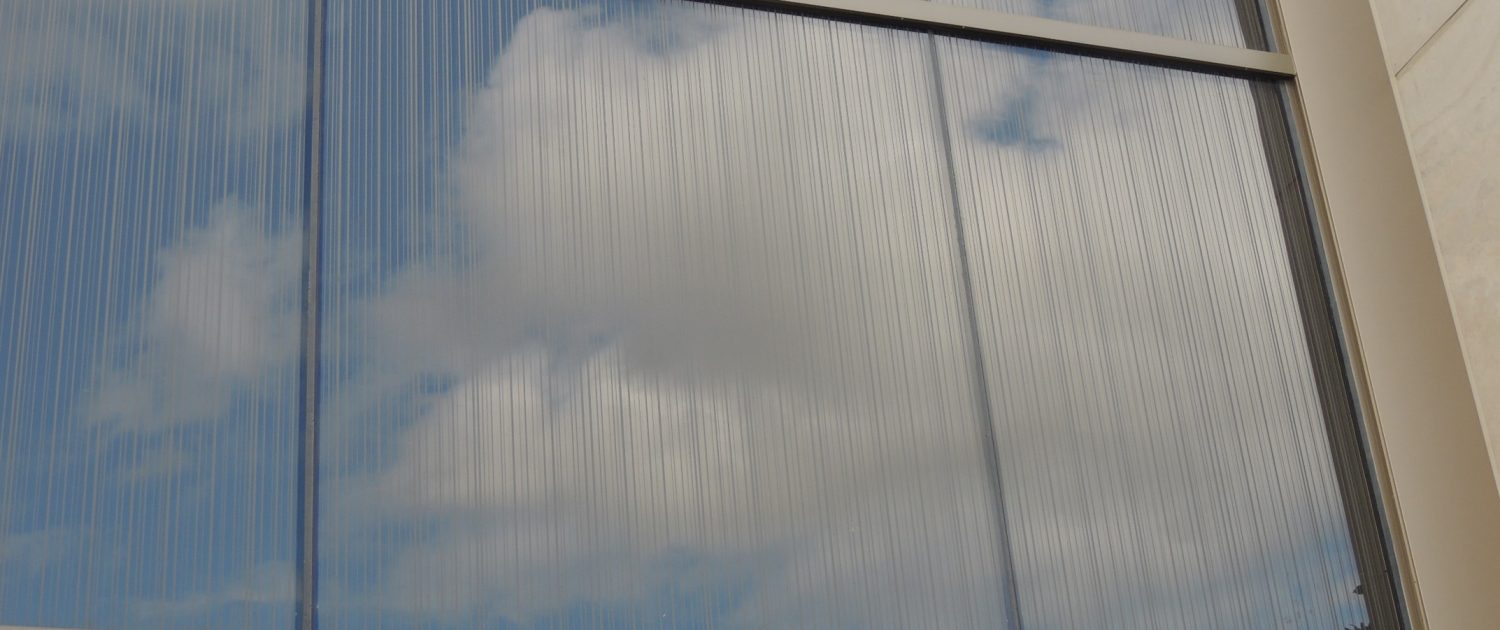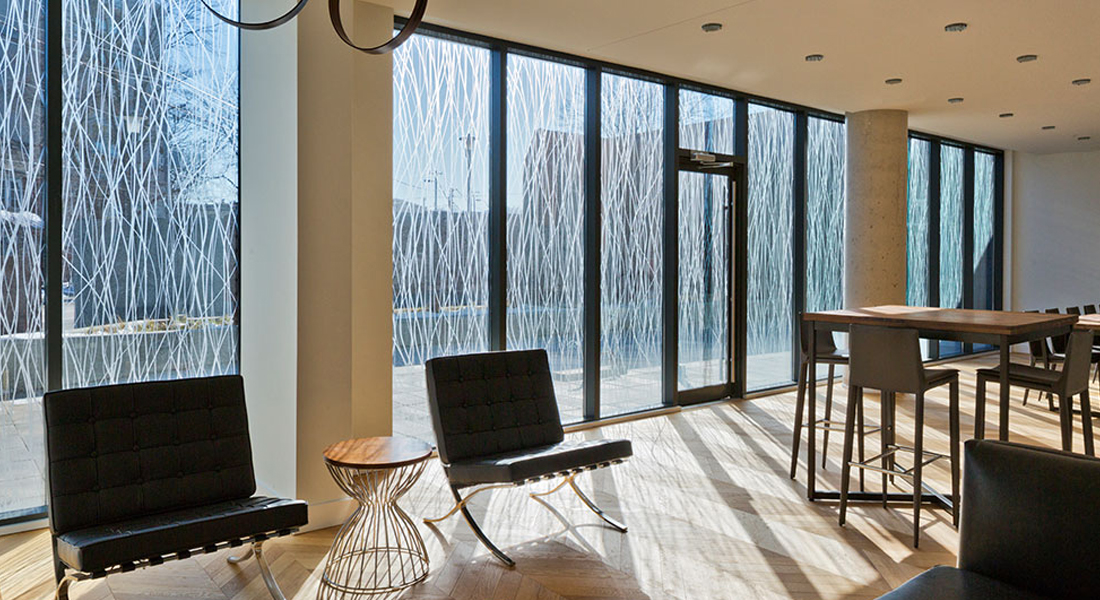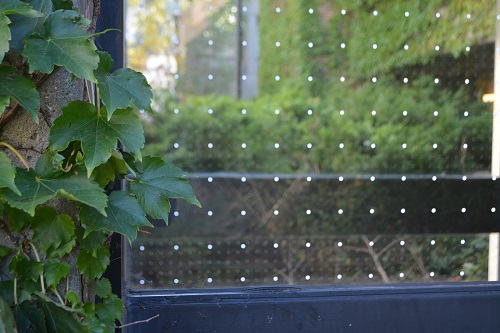Note on netting
FLAP Canada does not recommend netting as a bird-collision deterrent. It can be complicated to install, costly, create additional maintenance, and pose an ensnarement danger to birds.
Note on UV treatments
Although UV window treatments are theoretically an attractive option (invisible to humans yet visible to birds), there is mixed evidence of their efficacy in preventing bird-window collisions. If exploring UV treatments, it is critical to ensure that patterns reflect 20-40% over the 300-400 nanometer wavelength and that the UV coating is applied to the first surface of glass. Otherwise, birds may not notice the UV markings and may still collide with the glass.
Additionally, UV marker coatings require direct exposure to sunlight in order to perform optimally. This suggests that, in the case of the northern hemisphere, UV window treatments should only be installed at south-facing facades.
While there are UV products available on the market, FLAP Canada recommends choosing an alternative method until we know more.





